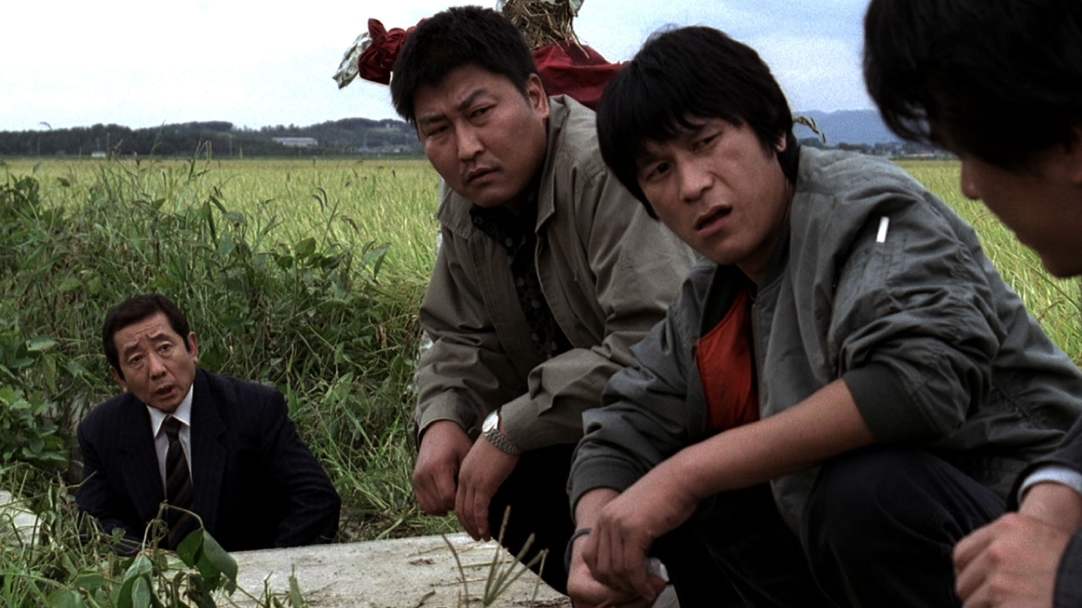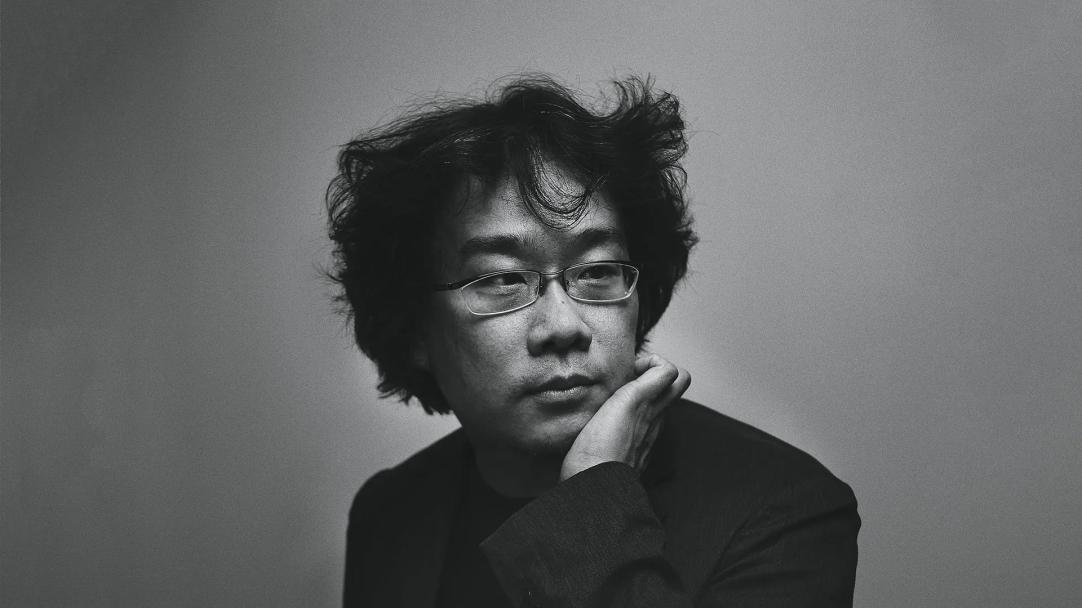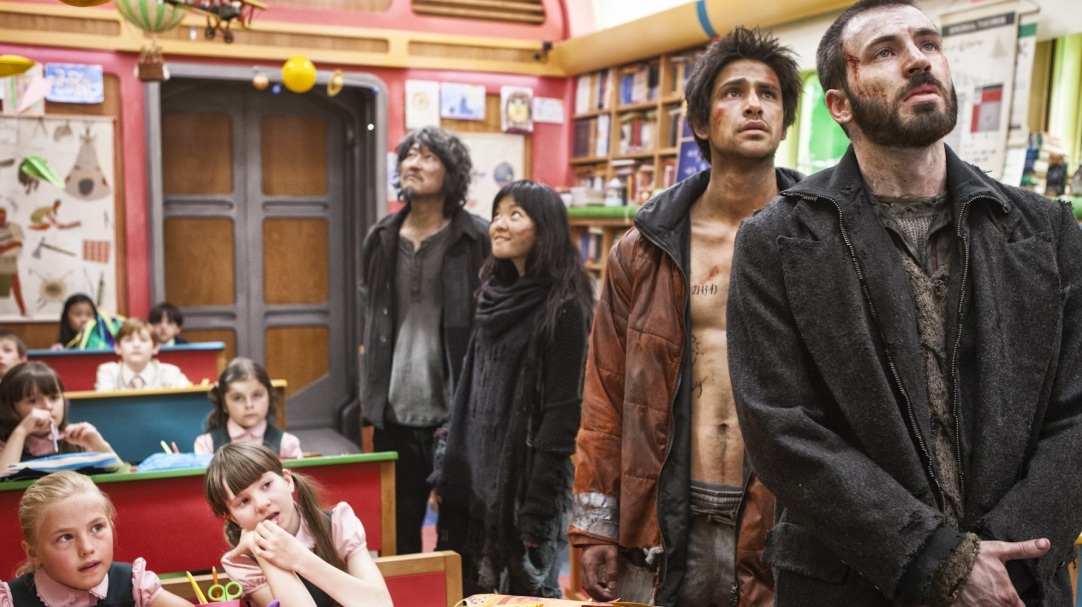The Post-Colonial World of Bong Joon-Ho
Bong's films are postcolonial in the sense that they often reflect the Korean context by depicting the United States as a neo-colonial empire; however, his postcolonial messages are largely dependent on a reversal of American genre expectations, and, as a result, his films still dialogue with the co

The following is adapted from an essay I wrote for a media criticism course while at Calvin University. Seeing as this was originally composed in an undergraduate academic setting, I hope the reader will be generous to the young essayist that wrote this. As an academic text, the piece is more reliant on additional sources and argument making than I would prefer. That being said, I still think it’s a good essay on the films of Bong Joon-ho. For full transparency, I have preserved the argument in full, though I have abbreviated portions, refined certain sentences, and reduced citations. Any citations that could be converted into live, accessible links were made so.
The course this was written for was taught by Dr. Carl Plantinga, a Ph.D. student of David Bordwell. Plantinga and his own writings on movies have been instrumental to my vision as a critic. Please enjoy.

With his seventh film, Parasite (2019), Bong Joon-Ho became the first Korean director to win the Palme d’Or and fully entered North American cinephilia with the full powers of stardom. Many Americans may have already been familiar with his two English works: Snowpiercer (2013) and Okja (2017), though he has captured his Korean audience from the start. At its release, The Host (2006) was the highest-grossing Korean film ever made, and in a Film 2.0 survey, the Korean film world selected Memories of Murder (2003) as the greatest Korean film ever made, with The Host also placing in the top-5.1 While Bong’s popularity in the West is still rising, his films cannot be divorced from their Korean postcolonial context. Bong's films are postcolonial in the sense that they often reflect the Korean context by depicting the United States as a neo-colonial empire; however, his postcolonial messages are largely dependent on a reversal of American genre expectations, and, as a result, his films still dialogue with the colonial power that shaped modern Korea.
The Korean Context
Understanding the Korean context in relation to the United States is critical to understanding Bong’s films since national cinemas reflect, are shaped by, and dialogue with national anxieties. Pre-World War II, Korea was colonized by Japan, only to be subjugated and divided by the Cold War powers. The US military then occupied South Korea, where they would eventually fight a war and oversee elections. Until the 1990s, the United States gave economic and political support to authoritarian military regimes, which led Koreans to gradually become more cynical of the neo-colonial empire2. Even today, the United States still maintains a military presence in South Korea. Perhaps most relevantly, the Asian financial crisis of 1997 (the IMF crisis), in many ways caused by Western powers, disrupted the Korean economy, raised unemployment, and brought issues of class struggle to the forefront.3 The United States’s stepping into Korea to make decisions shaping the future of the country is a direct form of neo-colonialism.
Bong’s first feature film, Barking Dogs Never Bites (2000), came out a mere three years after the IMF crisis and engages with the end of the dictatorship pretty deliberately. The Janitor (Hee-Bong Byun), when asked by another character about why he hears dogs barking in the apartment setting where the movie takes place, remarks that nobody has cared much about the rule “since the liberation.” Additionally, class struggle, an issue brought to light from the IMF crisis just two years before production, haunts Barking Dogs Never Bite through the themes of job security and unemployment. Yun-ju (Sung-Jae Lee) is depressed about not having a job and tries to get a job as a college professor. His wife, Eun-sil (Kim Ho-jung), gets fired from her job and uses her severance pay to bribe a college board into hiring her husband. Coming just a few years after the IMF crisis, topics surrounding personal economics can’t be separated from the national context.
These themes take a front seat in Snowpiercer and Parasite, where wealth is intimately associated with the United States. In Parasite, the Kim family, who lives in utter poverty, cons the uber-wealthy Park family into letting their entire family work for them. In the process, the wealth of the Park family is associated with the United States. As each member of the Kim family moves their way into the Park circle, the Park’s, acting as colonizers, assign Americanized names to their inferiors: Ki-woo (Choi Woo-shik) becomes Kevin, and Ki-jung (Park So-dam) becomes Jessica. To be worthy of being around wealth, they must adopt these English names. The youngest member of the Park family, Da-song (Jung Hyun-joon), is obsessed with Native Americans. More specifically, he wants to play, or pretend to be, Native American. Being colonized by the Americans is just a game for the rich like him, rather than reality like it is for the Kim family. This interpretation requires that we view the Kim family, who happen to have the most common Korean last name, as representatives of Koreans negatively impacted by the American neo-colonial presence, including their interventions in the IMF crisis. Through the Americanization of the Kim’s names and the boy’s Native American obsession, the Parks are associated with America. This reflects the alienated wealth of the Park family for most Korean viewers. As Max Balhorn, a history Ph.D. student at Chung-Ang University in Seoul, writes: “[The Kim’s] life stands in stark contrast to the wealthy Parks, who enjoy the rare privilege of owning a luxurious, gated-off home with a spacious and landscaped front yard (practically unheard of in the dense cities of South Korea).” Their alienating wealth, unrecognizable to many Koreans, becomes associated with America. But perhaps their clearest association with American colonization is their basement bomb shelter to provide shelter from North Korean and Cold War threats. (The partitioning of Korea, as discussed above, was a colonial act on behalf of the United States and the USSR.) In the Park basement lies none other than the hidden husband of the former housekeeper, who, socio-economically, could very well be the Kims. Therefore, the Park family and their wealth, through the boy’s playtime habits, their abnormal wealth, and their house, are associated with Korea’s former colonizer, while the Kim family represents the minjung, or the Korean (lower class) multitude.
In addition to associations of wealth with the United States, Snowpiercer, his first English movie, reflects Bong codes the American-Korean relationships through racist character interactions. The post-apocalyptic train movie, where all humans live because the world is too cold to inhabit, stars Chris Evans as Curtis, who is most known to American audiences as Captain America in the Marvel Cinematic Universe. He is a member of the back end of the train, where the poor live in destitute and organizes a Marxist style revolt to move to the front —with the train being an unmissable metaphor for socio-economic classes. In his plot to the front, Curtis mercilessly pushes around the only Koreans in the film, Namgoong Minsu (Song Kang-ho) and Yona (Go Ah-sung).4 They are disposable in his revolution; as Curtis moves towards the front, he wakens Namgoong from a hibernation machine and pays him in drugs to open the gates. If Namgoong refuses to, Curtis threatens to put him back into hibernation. Thus, Namgoong, representing Korea, is subservient to “Captain America.”
Bong’s Relationship with The United States
Bong, as a director working from a postcolonial perspective, delegates some sort of role to the United States, the world’s most powerful neo-colonialist empire, in each of his films, with the exception of his first feature, Barking Dogs Never Bites (2000). In general, the mention of “America” in a Bong movie is nothing but bad news. In Okja, his Netflix original about a relationship between a girl and her giant pig, America is where the evil Mirando Corporation takes the eponymous pig to torture it. Likewise, as demonstrated above, in Parasite America is associated with the oppressive wealth of the Park family. Through this association, America becomes a symbol of oppression to the minjung.

Memories of Murder, a murder-mystery about the famous Hwaseong murders, navigates the US and Korean relations differently. The movie follows two cops, Park Doo-man (Song Kang-ho) and Seo Tae-yoon (Kim Sang-kyung), and their attempts to solve the murders. Both cops represent different ways of being a cop. On one hand, Seo embodies the Western model through his more Western education and style of investigating, which is demonstrated in the stakeout scene that recalls nearly every cop movie; on the other hand, Park, the protagonist, represents a more traditionally Korean investigative method. He exegetes these differences to his new partner by noting that American detectives, while more empirical and analytical, have to be more detached because of the vast body of land.5 Comparatively, because the small peninsula allows them to, Korean detectives “investigate with their feet.” In other words, as the University of Michigan doctoral student Joshua Schulze put it, “It is not a stretch to imagine their ideological clashes as representative of South Korea’s relationship to the United States.”6 The two cops send the DNA evidence of their suspect to the United States because the entirety of Korea lacks the technology necessary for DNA matching; thus, the protagonists are at the will of the US imperial power.
The Host, Bong’s monster movie about a fish that attacks a city, is an even more explicitly postcolonial text. The film opens by showing an American military mortician commanding a Korean inferior to dispose of expired formaldehyde in the Han River—an event that presumably creates the monster. As American studies scholar Christina Klein writes, “it is the Korean assistant, not the American morgue boss, who creates the monster… the English-language title of the film suggests the nature of this deepest crime, implying that Korea has let itself become a ‘host’ to a parasitic United States.”7 Importantly, the dumping of formaldehyde into the Han River is not straight from Bong’s imagination but is a retelling of actual US military actions in 2000 (the McFarland incident). By using an event connected to foreign imperialism, Bong places the fictional film into the real Korean neo-colonial context. This parasitic act is replicated later in the film. The government claims Gang-du has a virus because of his contact with the monster; when Gang-du insists that his daughter is alive, the American doctor seems to believe him but then turns to his Korean inferior to confirm that Gang-du has a virus. They claim they need a sample of his brain to be sure he isn’t carrying the virus, even though according to the television news earlier, the American government was incapable of finding any signs of viruses in their soldier who died during the initial attack. Once again, the Korean is placed in an inferior power position to the American yet is still complacent in the American’s heinous actions. If we take these one-on-one interactions to represent Korean and American relations, the film’s deepest anxiety is related to Korea’s oppression by the neo-colonial United States.
I’d like to argue, if that is even necessary, that Bong perceives of the United States as a colonial power that exercises its power over its Korean subjects, but he is not simply concerned with America’s power position over Korea. He is more delicately concerned with Korea’s response to this relationship, as The Host example makes evident. Two scenes in his filmography demonstrate this quite well. First, in the conclusion to Memories of Murder, through the failure of both cops’ methods to catch the killer, Bong observes that the American method is no better than the Korean. Second, at the end of The Host, when Gang-du is having dinner with his new adopted son, Se-joo (Dong-ho Lee), the boy says “Let’s turn it off. Focus on eating.” This implies that Korea can, or perhaps should, tune the voice of the West out. According to Bong’s cinematic political philosophy, Korea needs to move past its former relationship with the neo-colonial power.
Korean takes on American Genres
But explicit references to the United States aren’t the only way Bong’s filmography is shaped by his postcolonial perspective. Genre is key to analyzing the director’s relationship with the United States. The director himself said, “My movies are based in genre, which is a universal language. Everybody speaks it.” This is reflected in his films, which pretty easily fit into established genres. The Host and Memories of Murder both demonstrate this well, with the former being a horror movie and the latter a murder mystery. As with many auteurs, Bong subverts generic expectations; however, he does this in a way that uses Western genre molds to formulate a uniquely Korean and postcolonial interpretation of the world. Schultze says he uses “foreign form and local content” to produce transnational cinema.8 This argument seems rather incomplete, or even weak, in light of Bong’s background. It would be ideologically inconsistent for the same director who made the anti-colonial statement with the end of The Host to allow his “transnational” film to largely use colonial grammar by staring mostly white Americans and being almost entirely in English. Klein is more convincing: “Bong does not simply mimic Hollywood. Rather, he appropriates and reworks genre conventions, using them as a framework for exploring and critiquing South Korean social and political issues.”9 For example, Memories of Murder centers on Korea’s first serial murders, the Hwaseong murders, which fits the bill for a typical murder mystery. But, as film writer Jung Ji-youn demonstrates,10 his Korean audience would have known from the start that this was a lost cause for the investigators because the killer was never found. (That is, at the time of release. The murderer was actually identified in 2020.) This twist on the traditional takes on the genre is demonstrated by its Western forbearers, such as And Then There Were None (1945) and Clue (1985). There wouldn’t have been a mystery to Korean viewers.

The Host also twists the genre in a culturally local way. The plot itself significantly departs from the traditional creature-feature destruction movie. Normally, in American Godzilla-type destruction movies the government catches the monster and demonstrates the strength of the government to successfully handle such emergencies.11 Instead of focusing on catching the monster, The Host centers on Park Gang-Doo (Song Kang-ho)’s attempt to find his daughter, Hyeon-seo (Ko Asung). Meanwhile, the Korean government, instead of capturing the monster, shuts down the river and creates a false narrative about a lethal virus. By doing this, Bong takes the American story that communicates the strength and power of the government to handle these events and turns it on its head when translating the genre to a Korean context. Schulze compares The Host to other national catastrophe movies, like Independence Day (1996) and Godzilla (1998): “When they conform to generic convention, they offer a safe form of spectatorship in the knowledge that America will stop the world from ending.”12 Meanwhile, at the end of The Host, Park’s family fights the monster without the help of the government. This, like the use of the Hwaseong murders in Memories of Murder, sends signals about the incompetence of Korean authorities during the neo-colonial rule of the United States to handle events like the McFarland incident.12 More specifically, just after the local authorities fail to kill the monster and suppress the protesting crowd, Park Nam-il (Park Hae-il), Gang-Doo’s younger brother, throws Molotov cocktails at the monster while wearing a bookbag, and his sister, Park Nam-Joo (Doona Bae), an Olympic caliber archer, uses her weapon of choice.
These images are specifically Korean. Nam-il’s actions would recall the student-led (hence, the backpack) pro-democracy protests of the 1980s, that eventually took an anti-American agenda.14 Likewise, Nam-Joo’s archery skills are symbolic of a Korean national sport. This is particularly noteworthy because just before the family fight, the government uses Agent Yellow, a chemical that seems to be referring to America’s use of Agent Orange in Vietnam, to try to finish off the monster. Through this connection, not only is the monster associated with the United States, as Klein suggests, but so is the Korean government: through their participation in their own colonization they have become part of the problem. Thus, especially regarding the monster’s origins, it seems safe to interpret his final scene “as an assertion of the Korean national against the global American other.”15
This surely doesn’t mean Bong’s works are independent of colonial influence. That’s an impossible specter to escape. As already demonstrated, Bong reworks genre for Korean content16—however, this approach still assumes the starting place is not within one’s own national genres but within a genre language controlled by the West. In other words, American genres are necessary forerunners to Bong’s filmography. This is demonstrated in one of the most cited academic articles on Bong: Christina Klein’s “Why American Studies Needs to Think about Korean Cinema, or, Transnational Genres in the Films of Bong Joon-ho.” Klein is not a film scholar, but an American studies scholar. Her thesis, assuming consumption and not production defines national cinema, is that because Bong consumed large amounts of American movies that influence his work, his application of these texts is still Korean. Although she is generous to Bong’s Korean identity, she still admits his starting point is American texts. Even her argument about consumption, rather than origin, defining national texts can itself be interpreted as a colonial-privileged argument: Americans don’t consume a significant amount of East Asian pictures. It’s also very easy for an American to argue that when American cultural exports benefit the most from the definition. But how would a member of a colonized country feel about the majority of their “national cinema” not even being in their national language? Thus, Klein misclassifies Bong’s consumption of American texts as Korean.
Similar to his appropriation of genres, although not demonstrated here, others have demonstrated that his visual style also is greatly derived from Western styles.17 According to the great post-colonial literary critic Gayatri Chakravorty Spivak’s thought model, this would seem quite common for non-Western filmmakers: the minjung do not have a cinematic voice, in other words. This is no less true for Bong. While the boy turning off the American news at the end of The Host can be interpreted as empowering to non-Western audiences, “the TV has to be on before Gang-du can make the nationalist gesture of turning it off.”18 Perhaps even more illuminating, the monster that is the center of the iconic ending that rejects imperialism at the end of The Host, was itself made in the West, through The Orphanage, an American based visual effects studio. Bong’s production of his thematically postcolonial texts is still dependent on those who colonized his native country. In one of the foundational texts of postcolonial studies, The Empire Writes Back, the authors argue that it is common for early postcolonial works to “prevented from fully exploring their anti-imperial potential.”19 Bong, with Korea’s continual neo-colonized state through the American military presence, would classify, at best, as an early postcolonial filmmaker. Consequently, even in Bong’s most powerful attempts to critique colonial power the discussion starts not with the disfranchised, but with the powerful.
Snowpiercer as American Critique

After making multiple critiques of Korea for its relationship with the United States, Bong turned his eyes to the colonizer itself. Snowpiercer, his first English movie, allowed him to target a more American audience. In addition, it stars Chris Evans, widely recognized as the actor of Captain America, and is a take on an extremely American genre: the post-apocalyptic action film. Curtis (Chris Evans), a member of the proletariat on the back of the train, organizes a revolution to move to the front of the train in an effort to overthrow Mr. Wilford, who controls the engine and leads the bourgeoisie. In many ways, Curtis embodies the traditional American action star: he is white, superhero-esque, violent, and is moving towards power (symbolized by the front of the train).
Viewer identification with Curtis is disrupted as his underlying character is revealed, deconstructing the typical American hero. There are multiple keys to this. First, the revelation that when times were harsher, Curtis not only resorted to cannibalism and has eaten children, but he also refused to sacrifice a limb to feed the others on the train. This subverts the ever-so-present theme of patriotic sacrifice in American action movies, such as Godzilla: King of the Monsters, Captain America, or Star Trek: The Wrath of Khan. Second, when Curtis arrives at the front, Wilfred informs him that he will now take control of the train, recalling Curtis’s earlier words: “we control the engine, we control the world.” At this point, the camera looks at Curtis from the front, recalling the fight to the front where many of his friends and “comrades” were killed. Bong led-on the audience to dislike the members of the front and now our hero is set to become a member of them. And third, he is ultimately unsuccessful, unlike the traditional American hero.20 He is unsuccessful in the sense that the train is thrown off track and explodes, making him incapable of finishing his revolutionary goals. Only Namgoong and Yona make it to the front with Curtis. As Schultze describes, “Curtis is obsessed with mastering the machine, while Namgoong and Yona recognize this as a futile cycle that replaces one figurehead with the next.”21 They want to escape the train rather than reach the front like Curtis. The Korean characters, rather than wanting to gain power like Curtis, want to escape the effects of power altogether. When we realize Curtis is not who we thought, we identify with the Korean characters instead; we now want their plan to succeed—and it does. Therefore, even Bong’s work that most heavily fits under the umbrella of American film still has a Korean twist.
Bibliography
- Jung Ji-youn, “On the Director: Mourning and Anamnesis,” in Korean Film Directors: Bong Joon-ho, trans. Colin A. Mouat, (Seoul Selection, 2012, Kindle Edition), 327.
- Christina Klein, “Why American Studies Needs to Think about Korean Cinema, or, Transnational Genres in the Films of Bong Joon-ho,” American Quarterly vol. 60, no. 4, 2008, 871-898: 874-875.
- Darcy Paquet, New Korean Cinema: Breaking the Waves, (London: Wallflower, 2009): 62.
- Joshua Schulze, “The Sacred Engine and the Rice Paddy: Globalization, Genre, and Local Space in the Films of Bong Joon-ho,” Journal of Popular Film and Television, 2019, 28.
- Schulze, 23.
- Schultze, 22.
- Klein, 890.
- Schultze, 22.
- Klein, 873.
- Jung, 241.
- Schultze, 25.
- Schultze, 25.
- Jung, 436.
- Klein, 887.
- Klein, 887.
- Moon-yung Huh, “Making Genre Films in the Third World: Memories of Murder and The Host, Genre and Local Politics,” Korean Film Directors: Bong Joon-ho, trans. Colin A. Mouat, (Seoul Selection, 2012).
- Schultze, 29.
- Klein, 890.
- Bill Ashcroft, Gareth Griffiths, and Helen Tiffin, The Empire Writes Back: Theory and Practice in Post-colonial Literatures, 2nd ed. (London ; New York: Routledge, 2002), 6.
- Schultze, 28.
- Schultze, 28.